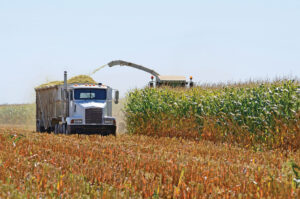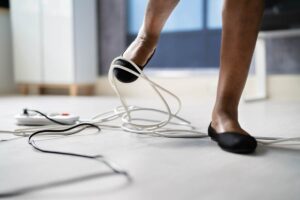Severe thunderstorms, tornadoes, floods and hurricanes can cause devastation to lives, homes, businesses and communities. On top of which, these storms can cause the power to go out for extended periods of time. Being prepared for a severe storm, and knowing what to do in its aftermath, can mean the difference between survival and a tragedy.
According to the U.S. National Weather Service, Americans experience an average of 100,000 thunderstorms, 10,000 severe thunderstorms, 5,000 floods, 1,000 tornadoes, and two deadly hurricanes every year, resulting in 500 deaths and $15 billion in damage.
While your electric cooperative’s employees work around-the-clock to minimize the possibility of power outages, they do occur. The risk is even greater during severe weather events, such as when strong winds bring tree limbs into contact with power lines or bring down entire utility poles. We saw an example of that in late February when many of the state’s co-ops were hit by a winter storm with high winds.
Line workers are dispatched to the disaster areas where storms have damaged electrical equipment in order to ensure public safety and restore power. These linemen are often called storm heroes or storm soldiers because they have the knowledge, training and courage to head into the immediate aftermath of a severe storm in order to help others. A number of electric co-op linemen also work for local volunteer fire departments in their communities.
These linemen face numerous dangers as they restore power to homes and communities by clearing any lines or equipment that pose a risk to public safety, reconnecting downed power lines and repairing damaged equipment. They are often working in inclement weather conditions and put in a great deal of time. When a storm’s devastation is extraordinary, it is not uncommon for crews to travel great distances to help others in need.
The time it takes to restore power can vary widely depending on the extent of a storm’s destruction, the number of outages, and when it becomes safe for utility personnel to get to the damaged areas. Whether it is minutes, hours, or days, it always pays to be prepared.
Preparation is key when it comes to safety. Making a plan and an emergency kit now can save lives later.
Some of the important items to include in an emergency kit are: water bottles, non-perishable food, flashlights, extra batteries, first aid kit, and a portable weather radio. For a full list, visit SafeElectricity.org.
Another part of preparation is paying attention to weather forecasts for your area so that when a storm hits, you can already be in a safe shelter.
If you are outside, head inside immediately to avoid being caught in a storm. Stay away from windows, go to the lowest level in your house, avoid corded electrical equipment (including corded telephones), and have your emergency kit within easy reach. Remember, no place outside is safe when thunderstorms are in the area.

Even after a storm passes, it can leave many hazards in its wake. Stay far away from all downed lines and any objects they are touching. If you see a downed power line, call 911 to notify emergency personnel and your electric cooperative immediately.
Do not venture out on roads after a storm unless necessary. If your vehicle comes in contact with a downed power line, do not leave the car. Downed power lines can still carry electricity. Stepping outside your vehicle can create two points of contact and could result in electrocution. Wait for utility and emergency professionals to make sure the power line is de-energized before exiting the car.
Be prepared to safely weather severe storms and possible extended power outages. And when you have the chance, thank a lineman for helping keep the lights on and people safe.
For additional safety tips, visit SafeElectricity.org.









